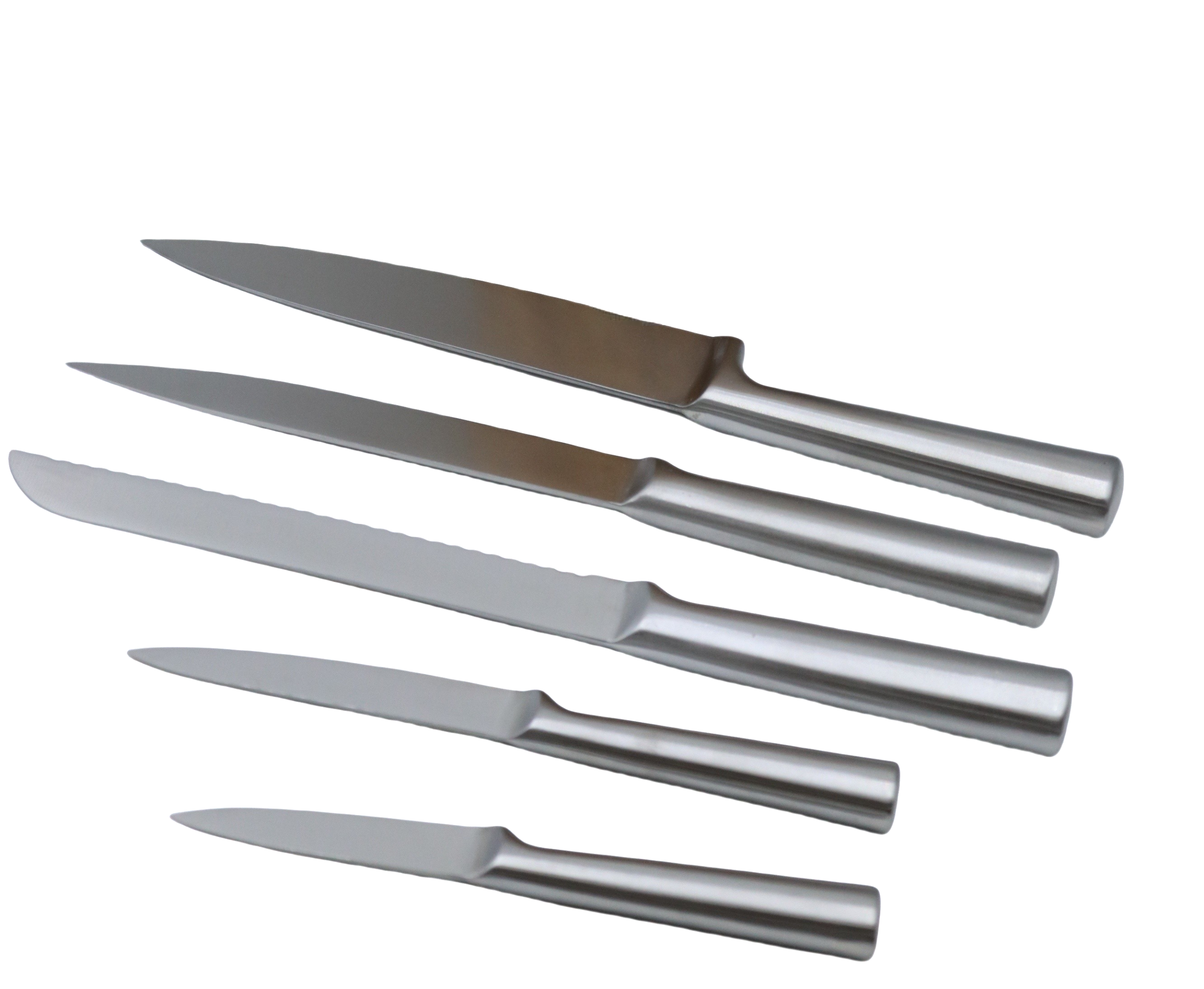The secret to a premium kitchen knife set lies in its steel—different steels determine sharpness, durability, and rust resistance. Our mission is to help you find the perfect ‘culinary weapon’ tailored to your needs.

The Complete Guide to Kitchen Knife Steels: How to Choose Your Perfect Blade
A knife is the soul of the kitchen, and steel is the soul of the knife. Faced with overwhelming choices in knife steels, consumers often struggle to decide. This article dives deep into the properties of six mainstream kitchen knife steels, revealing the science behind them and helping you find the ultimate culinary tool.
The Four Core Properties of Steel
Before comparing specific steels, understand the four key performance indicators:
- Hardness (HRC): Resistance to deformation, determines edge retention.
- Toughness: Resistance to chipping, impacts durability.
- Corrosion Resistance: Anti-rust and stain-proof capabilities.
- Ease of Sharpening: Maintenance difficulty.
In-Depth Analysis of Popular Steels
1. High-Carbon Steel (Carbon Steel)
- Hardness: HRC 58–62 (can be forged to extreme hardness)
- Representative Grades: 1095, White Steel.
- Pros:Razor-sharp edge, exceptional edge retention, preferred by professional chefs.
- Cons:Requires daily maintenance, prone to rust.
- Case Study: Traditional Japanese Santoku knives often use Shirogami (White Paper Steel), delivering the cutting precision celebrated by Michelin chefs.
- Best For: Professional chefs/serious cooking enthusiasts.
2. VG-10 Stainless Steel
- Hardness: HRC 60–62
- Composition: 1% carbon, 15% chromium, molybdenum/cobalt reinforcement.
- Pros: Perfect balance of sharpness and rust resistance.
- Tech Innovation: Hitachi Metals’ “super steel” that revolutionized stainless steel hardness.
- Iconic Product: Shun Classic Series.
- Maintenance: Sharpen monthly; wipe dry after washing.
- Damascus Steel
- Craftsmanship: Layered forging (modern versions prioritize decorative patterns).
- Performance Secret: Core steel determines quality (often paired with VG-10 or SG2).
- Buying Tip: Focus on the core steel, not layer count (67 layers is the aesthetic sweet spot).
- Value Proposition: Fusion of performance and artistry.
4.Physical Properties of 420J2 - Hardness: HRC 50-53 after heat treatment (typical range for standard kitchen knives)
- Tensile Strength: ≥735 MPa
- Corrosion Resistance: No visible rust after 48 hours in a neutral salt spray test (superior to carbon steel, slightly inferior to 5Cr15MoV)
Core Advantages Analysis - Exceptional Rust Resistance
- High Chromium Content: Contains approximately 13% chromium (12-14%). Chromium reacts with oxygen to form a dense chromium oxide layer, effectively isolating moisture and acidic corrosion.
- Easy Daily Maintenance**: Unlike carbon steel knives (e.g., 1095), simply rinse with water and dry after use—no oiling or special care required.
- Broad Environmental Adaptability**: Ideal for humid kitchen environments, especially for coastal regions or users frequently exposed to water.
- Lightweight and User-Friendly Design
- Moderate Density: Lighter than high-carbon steel knives (e.g., 1095), reducing fatigue during prolonged chopping, making it suitable for elderly users or those with limited hand strength.
- Blade Toughness**: With a hardness of HRC 50-53, the blade resists chipping and can handle light tasks like crushing garlic or slicing semi-frozen meat.
- Low Maintenance Requirements
-No Special Tools Needed: A standard whetstone or ceramic sharpening rod is sufficient for edge restoration. - Manageable Edge Dulling: For household use (3-4 times per week), sharpening every 2-3 months maintains adequate sharpness.







